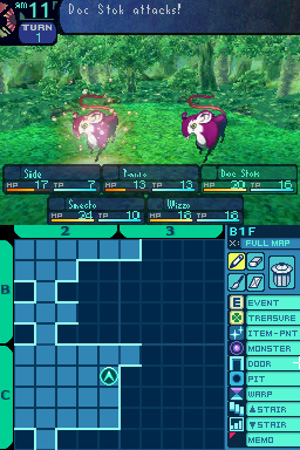
This is the follow up to Emilio Miraglia’s The Night Evelyn Came Out of the Grave. Red Queen sits more firmly in the traditional giallo structure of a modern (well, 1970’s modern) murder mystery with touches of horror and gore. There is much stronger plotting and characterization and it’s overall a better movie. I wouldn’t quite put it on the upper tier of giallos, but there a few iconic moments that make it better than average.

Well, Gene Wilder died a this week so it’s fitting that the next CD in my queue would be the Willy Wonka soundtrack. Gen X’ers are filled with tons of nostalgia over this movie and the songs therein, but can any of us sing a single line from “Cheer Up Charlie?” Nope. That song is trash that nobody remembers. The rest of the CD is filled with gems like “Candy Man”—a personal favorite because it is my go-to karaoke track. Also, there’s quite a bit of film dialogue between songs, which is always a plus for me.

This one’s a strange Gothic horror and giallo hybrid. Meaning, lot’s of cool 70’s décor within an ancient castle. Very early on it’s established that the main character is a prostitute killing psychopath, and yet we are supposed to care that he is being haunted by the ghost of his dead wife. Like a lot of these Italian films, the plot is an afterthought. Stylish visuals, lots of nudity and a brilliant Bruno Nicolai score are the focus here.

A reasonably good martial arts movie that borrows a lot of its plot structure directly from The One-Armed Swordsman. The star of the show here is the titular guillotine: a giant yo-yo/bird cage that lands on an enemy’s head and does its work. At times it feels like a slasher movie as the guillotine effortlessly claims its victims one after another. There isn’t much fight choreography here, and overall it’s pretty silly, but I was entertained through most of it.
Etrian Odyssey is an old-school RPG in the vein of Wizardy or The Bard’s Tale. That is, you assemble a party of adventurers, go to a town hub to gather quests and equipment, then delve into an uncharted labyrinth killing monsters and mapping your progress. There isn’t much of a story to follow here. Your goal is to find the “secret of the labyrinth” which, spoiler alert, has something to do with global warming (97% of scientists agree this is a dumb twist). Exploration and combat are the real core of the game, and the mapping of the maze is the primary gimmick. A task for which the DS is excellently suited. No need for graph paper. Just use the stylus and mark your map directly in the game. I can’t tell you how frustrating it was playing Bard’s Tale, carefully mapping away, only to have my time-consuming efforts foiled when the map ran off the edge of the graph paper. I’d then have to tape a second piece to the side or, worse, start over from scratch.
I’m sure there a lot of players who would still be turned off by the thought of not having an auto-map feature, but I find it oddly rewarding. In a way it gives the game a casual feel, almost like completing a Picross puzzle. This is despite the hard-as-nails difficultly of the actual game-play. The game is relentless in throwing random encounters at you. Many of the spells and power-ups try to address this by temporarily lowering the chance of battles. But these random fights are pretty much par for the course in Japanese role-playing games and which is why I typically try to avoid JRPGs (Phantasy Star being another exception). However, in this instance they are the core of the experience. Never fear, there is a gentle progression as your characters gather experience and skills. In each case as I worked my way through a new level’s difficult monsters, by the time I reached the next stratum (the labyrinth’s sections), I was easily steam rolling over the those same monsters who were troubling me a few floors earlier. Mindless, yes… but, even with the general lack of narrative, also weirdly satisfying.
For the past half-year or so I have been participating in the PRF Monthly Tribute series where various artists and friends cover a different band each month. This month I did a cover of Fleetwood Mac’s “Big Love.” I thought there were not enough references to Zardoz in the Fleetwood Mac oeuvre, so I fixed that.

Required reading for anyone who is sick of the political name calling and soft bigotry that permeates every single political post on social media. Written in an entertaining and adequately humble style, The Righteous Mind provides a well-researched, scientific answer to the question, “Why can’t we all just get along?”
Unlike most non-fiction books these days, which all seem to have a short essay’s worth content that’s then spread over twelve repetitive chapters, Haidt carefully builds his thesis bit by bit. It’s not until the final chapter that he finally gets down to the nitty gritty of Democrats vs. Republicans. The book starts by demonstrating that we are not purely rational in our decision making: intuition steers us and it’s only post-hoc rationalization that makes us think we have arrived at a reasoned decision. Then it goes on to define the moral “taste buds” upon which we build our moral frameworks. Liberals are very sensitive to care/harm while mostly ignoring other receptors like loyalty/betrayal and sanctity/degradation. Lastly, we are shown that humans are both individualistic and groupish. Given the right circumstances we trigger our hive switch and work (and evolve) as a groups. Finally, it is all tied together to show how understanding these principles might lead to more civil discourse and a better understanding of those with whom we disagree.

It’s been quite some time since I picked up my Nintendo DS. I have been hacking away at Picross 3D for years now, and I finally decided to buckle down and finish the dang thing before I go completely farsighted in my old age. Turns out, despite my procrastination, this is one of the best casual games on the DS.
The original, 2D Picross was for the SNES and there have since been dozens of themed variations on various platforms including an excellent DS version. At their core these are deduction and logic puzzles with apt comparisons to Sudoku. You are given a grid with numbers running down two sides. The numbers are clues as to the amount of squares you should fill in in each row and column. A number 10 on a 10 x 10 grid is easy: fill in all 10 squares in that row. It starts to get tricky when you are given multiple numbers with lower values. That’s when your brain starts to hurt as you figure out every possible combination of squares that might get filled in and make the ones you know for sure are filled no matter the arrangement.
In Picross 3D, one would think that the added third-dimension would make your head explode, but actually the puzzles are less difficult. The mechanics are a little different. You are now removing blocks based on the numbers and you can only have a single number per row. You know there are multiple sets of blocks in a row if that number is circled or boxed. Solving the puzzles is a matter of meticulously slicing through the object and working on each layer one at a time. It’s very zen and, for the most part, offers just enough challenge so that I was never frustrated but always having to think. It’s not until the hard levels 9 and 10 that things start to get real difficult. Even still, the difficulty there is simply completing the puzzle within the time limit.
As you break through the blocks a 3D shape starts to emerge. This is the closest to chiseling a sculpture that you will ever experience in a video game (well, not including Minecraft). Successfully completing a shape triggers a short, humorous animation and puts the object into a category like “Fun in the Sun” or “Ever Stronger.” If I had one complaint it’s that, having finished the game with 100% perfect ratings, there wasn’t much fanfare and game’s end. I need mindless digital rewards for my time-wasting efforts!

Stephen Chow could not save this tone deaf action/comedy. Made in the late eighties, there are maybe two or three genuinely funny moments in the movie. The rest barely rises to the comedic heights of an episode of Suite Life of Zack and Cody. Mix with that action that is way too violent for the grade school tone and a squirmy love interest plot line involving a teacher and student. It’s hard to believe Chow amounted anything after this.

This was my least favorite of all the Tarantino films I’ve watched (I still haven’t seen Inglorious Basterds). Even Death Proof, which also had shallow characterization and a paper thin plot, managed to entertain me a bit more with its breathless action. But, in the end, I think I enjoyed The Hateful Eight more than not. The music is great and there are plenty of clever moments. I think it was just a general lack of character development and maybe just a bit too much filler that kept this from being great.





